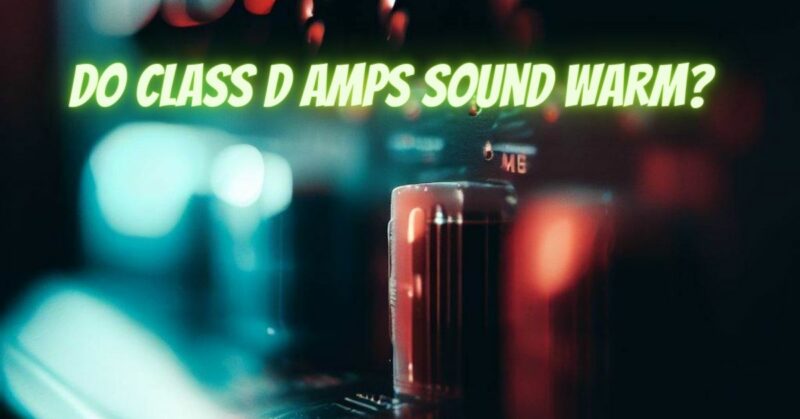In the ever-evolving landscape of audio amplification technology, Class D amplifiers have emerged as a game-changing innovation. Known for their efficiency, compact size, and low heat generation, Class D amplifiers have become increasingly popular in various audio applications. However, one question that often arises is whether Class D amplifiers can achieve the elusive quality of “warmth” that many audiophiles and music enthusiasts cherish. In this comprehensive article, we will delve into the world of Class D amplifiers, explore their characteristics, and assess their potential to replicate the warm sound often associated with traditional amplifier classes.
Understanding Class D Amplifiers
Class D amplifiers, also known as digital or switching amplifiers, differ significantly from their analog counterparts, such as Class A, Class AB, and Class B amplifiers. The key feature of Class D amplifiers is their operating principle, which involves rapidly switching the output transistors on and off. This switching behavior is used to amplify the audio signal efficiently, resulting in reduced power consumption and heat generation.
Efficiency and Size Advantages
One of the primary reasons for the widespread adoption of Class D amplifiers is their efficiency. These amplifiers can convert a high percentage of input power into output power, making them energy-efficient. Consequently, they generate less heat, which is especially advantageous in compact audio equipment and portable devices. Class D amplifiers have found their way into applications such as mobile phones, home theater systems, and even professional audio setups.
Chasing the Warmth: Can Class D Amplifiers Deliver?
The concept of “warmth” in audio is subjective and often associated with the sonic characteristics of analog amplifiers, particularly those of Class A and Class AB. Warmth is characterized by smooth, rounded tones, rich midrange frequencies, and a pleasing, inviting sound signature. Audiophiles and music enthusiasts often seek warmth for its ability to make music feel more natural and emotionally engaging.
Factors Influencing Warmth in Class D Amplifiers
- Design Philosophy: Some Class D amplifier manufacturers prioritize replicating the warmth of analog sound in their designs. They may incorporate specific circuitry or components to achieve this goal.
- Filtering and Feedback: The design of the output filter and feedback mechanisms can influence the tonal characteristics of Class D amplifiers. Careful tuning can enhance warmth.
- Speaker Pairing: The choice of speakers can significantly impact the perceived warmth of the audio system. Matching Class D amplifiers with speakers known for their warm sound can yield better results.
- DAC (Digital-to-Analog Converter): The quality of the DAC in a Class D amplifier can influence its ability to reproduce the subtle nuances that contribute to warmth.
Balancing Efficiency and Warmth
Class D amplifiers are renowned for their efficiency, but achieving warmth in their sound signature can be a complex task. Engineers and designers often face the challenge of balancing efficiency with sonic characteristics. While some Class D amplifiers can deliver impressive warmth, others may prioritize different aspects of sound reproduction, such as accuracy and clarity.
Class D amplifiers have transformed the audio industry with their efficiency and compact design, catering to a wide range of applications. While they may not replicate the warmth traditionally associated with analog amplifiers, some Class D models have made strides in achieving a more inviting and engaging sound signature. Ultimately, the pursuit of warmth in audio amplification is a matter of personal preference, and audiophiles and music enthusiasts should carefully audition Class D amplifiers to determine if they meet their sonic expectations. Whether you seek efficiency, warmth, or a combination of both, the world of audio amplification continues to offer diverse options to suit your unique listening experience.


